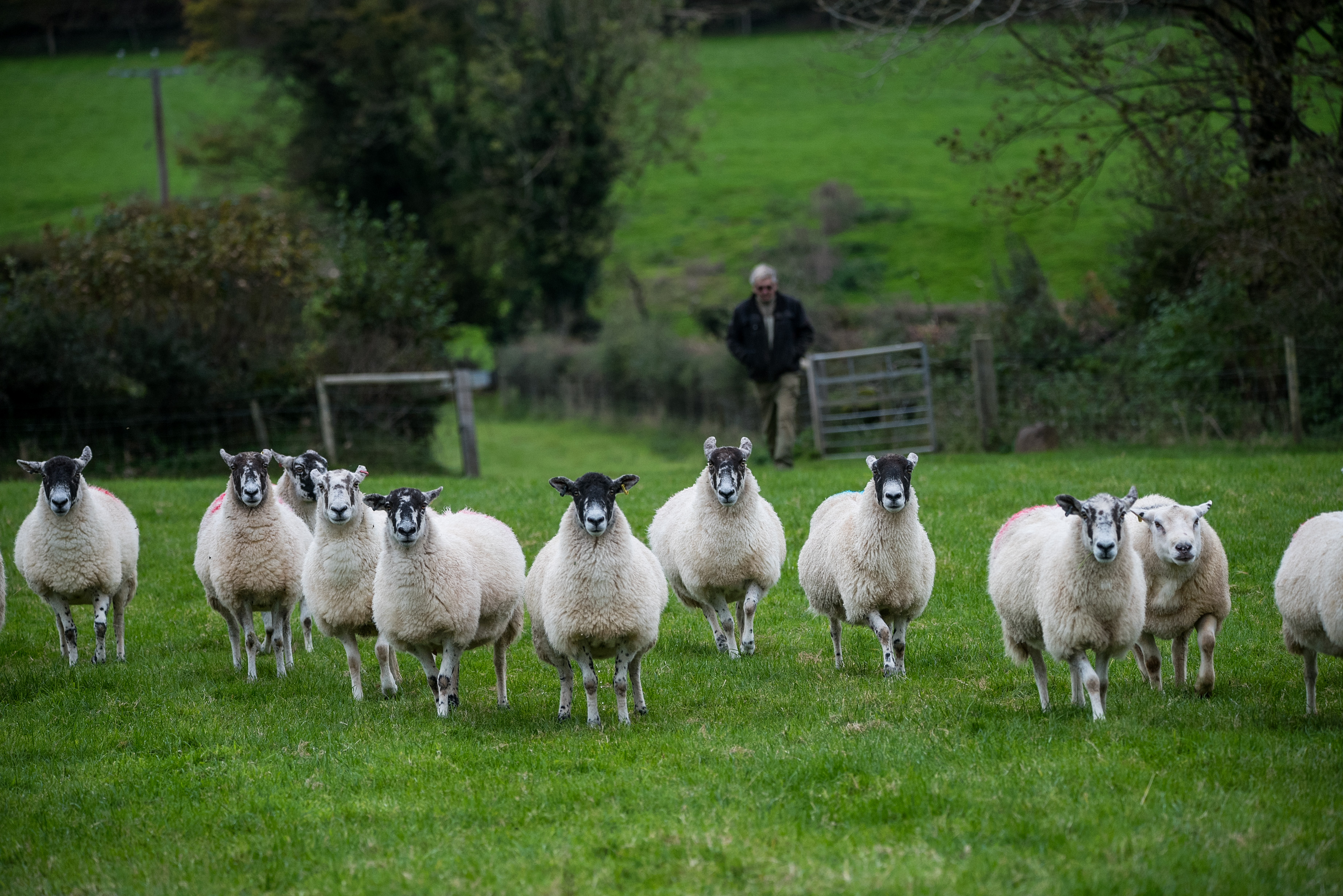- Home
- Worming advice from Strategic Farmer Adrian Coombe
Worming advice from Strategic Farmer Adrian Coombe
Adrian Coombe farms with his wife Lyn, and father Peter, at Dupath Farm in Callington, Cornwall. Dupath Farm became one of the most recent recruits to the AHDB Strategic Farm programme last summer.
This has given Adrian the opportunity to access and exchange information from AHDB specialists, independent consultants and local farmers, which has influenced his decisions on farm. The AHDB initiative forms part of the Farm Excellence programme to review farm businesses and to help them to make informed changes to their business to become more profitable. As well as reviewing grazing strategies, nutrition and finishing times, Strategic Farmers have been closely monitoring their worm burden and testing the effectiveness of treatment.
Adrian and Peter were first introduced to using faecal egg counts (FEC) in 2007, when they were a Focus Farm for the Healthy Livestock project, funded through the Rural Development Programme for England. As part of the project they were trained and given a FECPAK to use, which is an internet-connected, image-based diagnostic platform, enabling them to conduct FECs themselves on farm. Prior to this, they had been following the traditional method of treating everything monthly (which was the general advice at the time) and then moving to a different field on a regular basis, rotating through the three groups of wormers available.

Adrian said: “When we started to use FECs, we had resistance testing done on the flock, which highlighted triple resistance to wormers. We were also starting to see slower finishing lambs, which was down to the resistance to the wormers building. This highlighted the need for a change, so we welcomed the use of the FECPAK which gave us near instant results that could be done at any time. After the Healthy Livestock Project finished, we were also lucky to be part of a project with Bristol University, which involved sending faeces samples to them every two weeks from both the lambs and sheep on the farm in their different flocks. The regular results back from them highlighted to us that set stocking increased the worm burden in the lambs significantly.”
By incorporating FECs into his routine, Adrian has developed and adopted a more efficient and cost-effective worming programme, through understanding when to treat and what to treat with. Adrian said: “In a normal year the lambs will get treated for nematodirus in April/May with a white wormer, a class 4 or 5 at weaning in June and a dose of yellow or clear wormer in mid-late September. Compared to the seven or eight doses we were traditionally administering, this is a reduction of approximately 50%. The whole flock is also rotationally grazed from turn out after lambing, which can also help to reduce the worm burden on the lambs.”
Adrian weighs his lambs every two weeks from 12 weeks old and monitors the growth rates across the flock. If their weight gain slows down, he conducts a FEC to determine whether they need worming. Adrian said: “The main benefit of using FECs is that we have cut out unnecessary worming of the lambs and sheep, which saves us money in labour and worming products. It also puts less stress on the animals, which has a positive effect on daily liveweight gain (DLWG). We are planning to revisit the wormer resistance testing and to look at how different classes of wormers work at different times of the year.”
FECs are now an important part of Adrian’s worming protocol and has improved the performance of his flock, as well as saving him money and labour. It has helped Adrian to build up a better picture of what is happening on his farm by knowing how big or small the worm burden is, leading to him making more informed decisions on the timing of the treatment. Adrian also uses FECs to determine the effectiveness of his wormers by doing a pre- and post-drench count, giving him reassurance that the wormer he is using has done its job.
Adrian says: “It is important that the drench you are going to use is effective. Calibrate your gun to ensure it is administering the correct amount – under drenching causes resistance, while over drenching is a waste of money. I would also recommend weighing your lambs regularly to determine the correct dose rate and follow the advice on the Sustainable Control of Parasites in Sheep (SCOPS) website.”
Information about the different species of worms, when they are a threat and why, can be found on the at www.scops.org.uk. For more information and resources, such as a parasite product guide and worm control manual, visit https://ahdb.org.uk/knowledge-library.
Making best use of faecal egg counting
The priority for worm control is to minimise the effect these internal parasites have on lamb performance. However, it is important to also consider the long-term sustainability of any control programme by avoiding the reliance on wormers as the sole means of control. A good plan includes a long-term worming strategy which is reviewed regularly and can be adapted to cope with changing patterns from year to year. Monitoring worm burdens using faecal egg counts (FECs) can help to ensure that treatments remain effective. A FEC can be used to determine if a wormer is required, test efficacy post treatment and provide guidance on the amount of contamination going onto pasture. It provides an indication of the number of adult worms in the gut of the sheep by counting the number of eggs the adult worms are shedding, which appear in the animal’s faeces. Results are presented as ‘eggs per gram’ (epg). Faecal samples can be collected and sent to a trained vet practice or commercial service, or a FEC can be carried out at home using specialist equipment.

It is important that FECs are used as a monitoring tool and not used to diagnose disease. Looking at one FEC, once or twice a year, does not provide a comprehensive picture of what is happening on your farm. Therefore, it is best practice to repeat the FEC on a regular basis (every 10-14 days in peak worm season) so you have the best information about the parasite burden on your farm.
Top tips for FEC sampling:
- Fresh samples (less than one hour old)
- Random samples (do not pick out extreme sheep, these will not be representative of the whole flock)
- Use at least 10 samples from each management group
Interpreting your FEC results depends on a number of factors. You should discuss with your vet or adviser but as a rule of thumb, these are a generic guide for lambs*:
- Low <250 epg
- Medium 250-750 epg
- High >750 epg
*These do not apply to Nematodirus, coccidiosis, fluke or Haemonchus.

